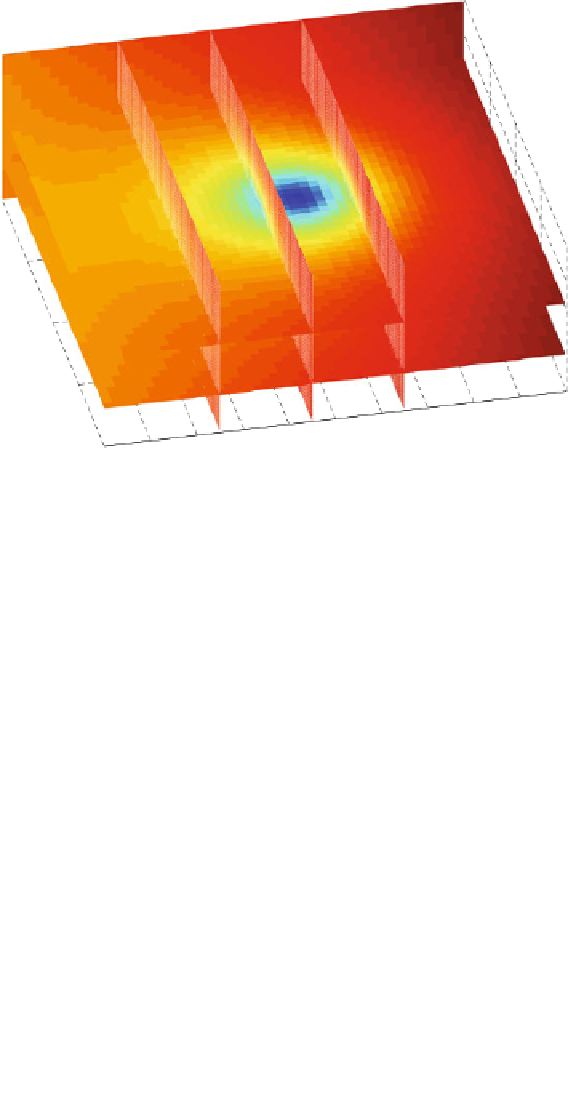Environmental Engineering Reference
In-Depth Information
3
2.5
2
1.5
3
1
2.5
2
1.5
3
2.8
2.6
2.4
2.2
2
1
1.8
1.6
1.4
1.2
1
Fig. 14.2 Potential flow in 3D
14.2 Potential and Real World Variables
From the Euler equations (see Chap. 11) for irrotational potential flow the following
formula can be derived (Guyon et al.
1997
):
v
2
2
þ p þ r'
f
¼ C
r
@'
@t
þ r
(14.7)
where
C
is a constant for the entire domain.
'
f
denotes the potential of an outer
force. Equation (
14.7
) resembles the Bernoulli theorem (see Chap. 11), which holds
for all solutions of the Euler equations but with a constant
C
on streamlines only.
It is a formula connecting the potential and real world variables
p
and
v
. If the
potential is known, the velocity can be obtained by formula (
14.1
), and (
14.7
)
becomes an equation for the pressure
p
as only unknown variable. Some conditions
concerning
r
'
are required additionally, which was already discussed in detail
by Prandtl and Tietjens (
1934
).
In 2D porous media flow it is usual to use the discharge vector q as the negative
gradient of the discharge potential
'
:
and
0
1
@'ðx; yÞ
@x
@'ðx; yÞ
@y
@
A
q
x
ðx; yÞ
q
y
ðx; yÞ
q
¼r';
in 2D:
¼
(14.8)






















